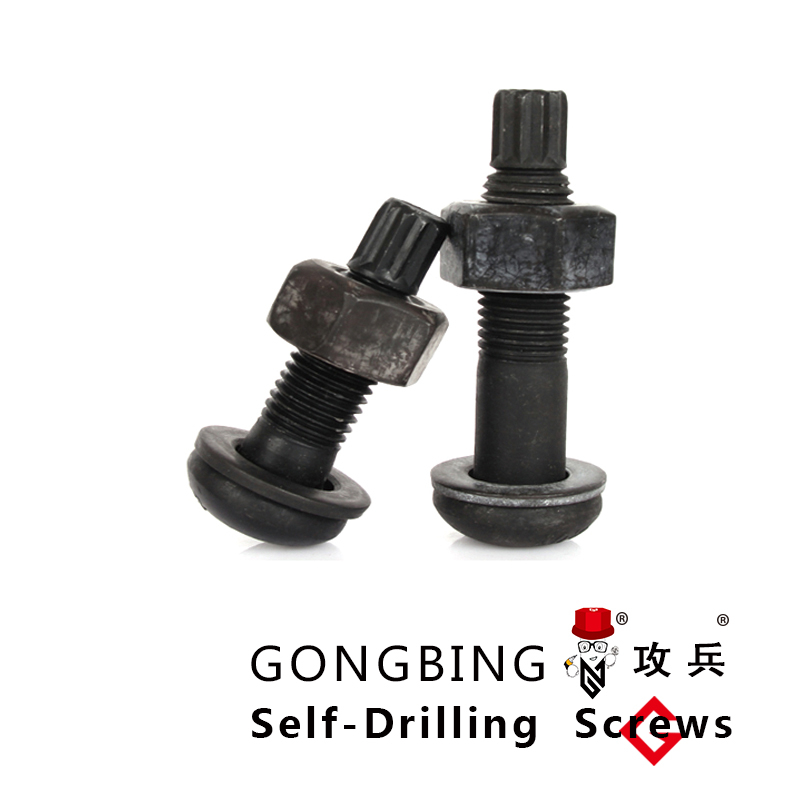screw expansion anchor
Understanding Screw Expansion Anchors
Screw expansion anchors are essential components in construction and engineering, facilitating the secure attachment of objects to various substrates. These anchors are particularly advantageous in situations where permanent installations are required, such as when fixing heavy equipment, shelving, or wall-mounted fixtures.
What are Screw Expansion Anchors?
Screw expansion anchors, often referred to as screw anchors or expansion screws, consist of a metal or plastic screw with an attached expansion mechanism. They work by creating a secure hold in materials such as concrete, stone, or brick. The primary mechanism of these anchors involves expanding when the screw is tightened, forcing the walls of the anchor against the sides of the drilled hole, thus securing it in place.
Types of Screw Expansion Anchors
There are several types of screw expansion anchors, each designed for specific applications and materials
1. Plastic Anchors Common in lighter loads and soft materials like drywall, plastic anchors are easy to install and provide a basic level of support without the need for heavy-duty equipment.
2. Metal Expansion Anchors These are designed for heavier applications. Made of durable materials such as steel or stainless steel, they provide superior strength and resistance to corrosion. They expand as the screw is turned, making them suitable for concrete and masonry.
3. Sleeve Anchors A variation of metal anchors, sleeve anchors consist of a long bolt with a sleeve that expands against the material when the bolt is tightened. They are particularly effective for outdoor and heavy-duty applications due to their robustness.
Installation Process
The installation of screw expansion anchors is relatively straightforward, making them a favored choice among DIY enthusiasts and professionals alike. The following steps outline a typical installation process
screw expansion anchor

1. Select the Right Anchor Choose an anchor that fits the requirements of your application in terms of load capacity and material compatibility.
2. Drill a Hole Use a hammer drill to create a hole in the substrate. The diameter and depth should match the specifications of the expansion anchor.
3. Insert the Anchor Place the anchor into the hole. Ensure it is flush with the surface to avoid complications when installing the screw.
4. Screw in the Bolt As you tighten the bolt or screw, the anchor will begin to expand. Ensure it is securely fastened but do not over-tighten, as this can cause the anchor to strip or break.
5. Test for Stability After installation, check the stability of the fixture to ensure it is securely attached.
Advantages of Screw Expansion Anchors
Screw expansion anchors offer numerous advantages
- Strength and Durability They provide excellent holding power for heavy loads, making them ideal for structural applications. - Versatility Suitable for a variety of materials, including concrete, brick, and masonry. - Simple Installation The installation process is quick and does not require specialized skills, making it accessible for many users.
- Cost-Effective They are relatively inexpensive, especially considering the strength and reliability they offer.
Conclusion
Screw expansion anchors are a vital tool in the construction and DIY industries. Their ability to provide secure and reliable fastening solutions in various substrates makes them invaluable for both professionals and hobbyists. By understanding their types, appropriate applications, and installation process, users can ensure that their projects are completed safely and effectively. As with any hardware, proper selection and installation are key to maximizing performance and longevity, making screw expansion anchors an essential element in the toolkit of anyone involved in construction or home improvement.
-
Weatherproof Plastic Expansion Anchors for OutdoorNewsJun.06,2025
-
Sustainability in the Supply Chain: Eco-Friendly TEK Screws ProductionNewsJun.06,2025
-
Load-Bearing Capacity of External Insulation FixingsNewsJun.06,2025
-
Double Head Bolts: Enhancing Efficiency in Industrial MachineryNewsJun.06,2025
-
Corrosion Resistance in Chipboard Screws: Coatings for Wholesale DurabilityNewsJun.06,2025
-
Butterfly Toggle Bolts : Enhancing Structural ResilienceNewsJun.06,2025
